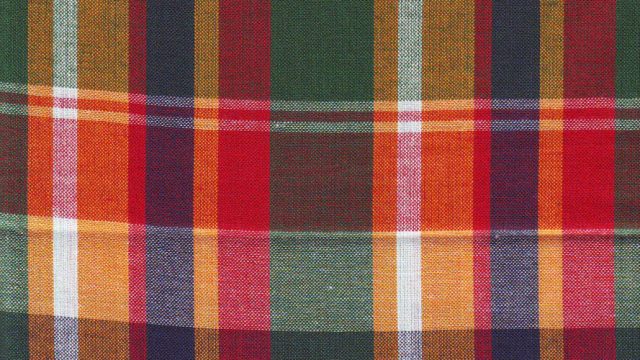India’s contribution to the sartorial world includes the humble hand-woven Madras cloth known as Madras Checks. Its influence on men’s prêt-a-porter went as far as America, where ad guru David Ogilvy advertised it as a shirt “guaranteed to bleed” in the 1960s. The original technique of Bleeding Madras involved dyeing hand-woven white cotton fabric (called gada) in a combination of aliziru (a rust red colour), indigo (blue) and myrablum (yellow plus white), all vegetable dyes. The warp and weft of the cloth would be hand woven in a combination of two colours, after which it was washed. With each wash, the colours would smudge and bleed, creating a faded effect. As far back as the 12th century, Madras was exporting un-striped gada for the making of head dresses in West Africa and West Asia. Centuries later, it is said to have caught the eye of Americans visiting the Caribbean and it made its way to North America. In the 1800s, weavers of Madras cotton started imitating Scottish tartan weaves worn by the Scottish regiments stationed in Madras. The tartan pattern is a juxtaposition of unevenly placed stripes criss-crossing at right angles. And this version of gada became renowned as the Madras Checks. Today Ralph Lauren comes out with Madras plaids called checks in Chennai and Bleeding Madras in America. A little town near Oregon in North America has even been named Madras. The Madras Bermuda shorts were also once ‘cool’ on American university campuses. In France, Madras has come to mean any checked cotton fabric.
Blog: A Shirt Called Madras
A short history of the famous Madras Checks

Blog: A Shirt Called Madras
Blog: A Shirt Called Madras



